Osho: Biography, Quotes, Books, Wife, Death
Osho was an Indian philosopher and godman who founded the Rajneesh movement. He was born on December 11, 1931. Osho was also known by the names Acharya Rajneesh and Bhagwan Shree Osho. Throughout his lifespan, he was seen as a problematic leader of a new religious movement.
He disapproved of established religions and argued that there was no way to categorize spiritual experience into a single body of knowledge. Osho served as a guru and showcased a unique type of meditation known as "dynamic meditation." He also encouraged his disciples to discard typical ascetic practices and live completely but without attachment.
In the late 1960s, he became popular in India as "the sex guru" for generating controversy by promoting a more liberal conception of human sexuality.
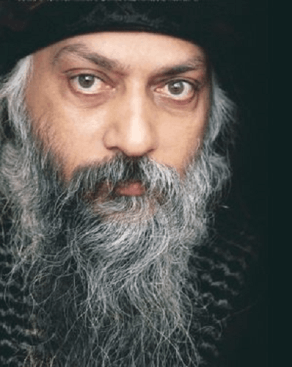
In 1953, when Osho was 21 years old, he had a religious experience. After spending several years in academia, Osho left his position at the University of Jabalpur in 1966 academia.
He started touring around India, where he rose to prominence as an outspoken opponent of the orthodoxy of major faiths, conventional political ideas, and Mahatma Gandhi.
Osho spent much time in Mumbai in 1970, introducing "neo-Sannyasins," his devotees. At this time, he developed his spiritual teachings and made longer comments in talks on the works of many religious systems, spiritualists, bhakti poets, and philosophers. Osho moved to Pune in 1974 when an ashram was formed, and a range of treatments, including those initially created by the Human Potential Movement, were made available to a growing number of Western customers.
Osho moved to Oshopuram, a location in Wasco County, Oregon, when the Osho movement's emphasis shifted back to operations in the United States in 1981. Conflicts arose between the movement, county residents, and the state government. Its progress was hindered by court cases over the ashram's establishment and ongoing expansion.
The attempted assassination of US attorney Charles H. Turner, the premeditated murder of Osho's doctor, and bizarre behavior in his living quarters were among the offenses for which US government in 1985 requested the local officials investigate his secretary Ma Anand Sheela and her close allies. And after the investigation she was found guilty along with other ashram members for this.
In compliance with a plea agreement with Alford, Osho was expelled from the US the same year due to distinct immigration-related offenses. Twenty-one countries didn't let him in after his departure.
Life
Childhood and Adolescence: 1931–1950
Osho was born Chandra Mohan Jain, the oldest of 11 children of a textile merchant, at his maternal grandparents' home in Kuchwada, a tiny village in the Raisen District of Madhya Pradesh state in India. Osho was given the childhood nickname " which is derived from the Sanskrit terms "God of Night" or "The Moon." His maternal grandparents raised him until he was eight. He was then raised by his parents, Taranpanthi Jains Babulal and Saraswati Jain.
He moved live with his parents in Gadarwara when he was seven years old, following the death of his grandpa. Osho's grandfather's death had a significant effect on him and the subsequent death of his close friend Shashi when he was 15 years old further made a huge impact in his life. As a result, Osho became obsessed with death for much of his adolescence. He had a reputation as a good debater but at the same time he was a rebellious student throughout his academic career.
Osho developed a critical attitude toward conventional religion and was interested in various techniques for enlarging awareness, including breathing techniques, yoga asanas, meditation, diet, the paranormal, and hypnosis. Vasant Joshi claims that Osho started reading books when he was a small child. He was labeled a communist and faced the possibility of being expelled from school.
According to Osho's uncle, Amritlal, the young people in this group frequently met to debate communist philosophy and their hostility to organized religion.
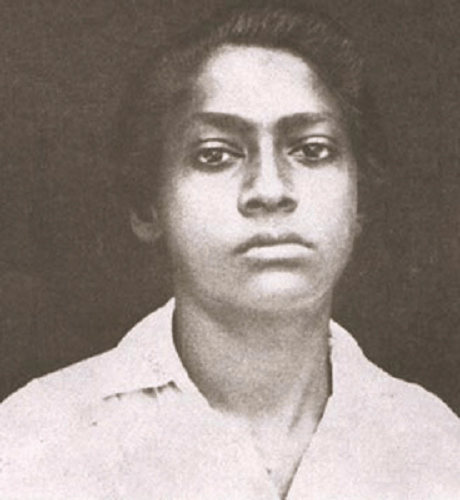
Later, Osho would remark, "Since I was a little boy, I have been fascinated by communism." Indeed, no book is lacking from my library of communist literature. Every work I wrote before 1950 has my signature and the date. I can clearly remember the smallest things since that was my introduction to the intellectual world. I was initially enthusiastic about communism, but after realizing it was dead, I changed my focus to anarchism, a Russian movement represented by Prince Kropotkin, Bakunin, and Leo Tolstoy. All three were anarchists who believed there should be no world government or state.
College Time and Public Speaker: 1951–1970
Osho started his education at Hitkarini College in Jabalpur. He was not compelled to attend college lectures at D. N. Jain College other than for exams because he had established himself as a disruptively arguing student. Instead, he utilized his leisure time to be employed for a few months as an editorial assistant at a local newspaper.
He made his first public speech at the Sarva Dharma Sammelan (Meeting of All Faiths), held annually in Jabalpur and attended from 1951 to 1968. He refused to give in to his parents' demands to get married.
He entered the University of Sagar after earning his BA in philosophy in 1955. There, he obtained his MA in philosophy in 1957. He was hired as a teacher at Raipur Sanskrit College right away. However, the vice chancellor swiftly demanded that he seek a transfer because he believed he threatened the students' morality, character, and religion.
He started as a lecturer at Jabalpur University, where he studied philosophy from 1958 to 1960 when he was given the title of professor. He was a well-liked teacher, and his colleagues saw him an exceptionally intelligent guy who had advanced above the constraints of his initial small-town education.
Alongside his employment at the university, he lectured against socialism, Gandhi, and institutional faiths while traveling the country of India as Acharya Osho (Acharya is the Sanskrit word for teacher or professor; Osho was a moniker he had picked up as a young boy). As a result of his frequent travels, he had grown accustomed to sleeping in the shaking train carriage beds and would have difficulty resting on a regular bed.
In a lecture from 1969, Osho asserted that socialism is the outcome of capitalism and that capitalism fuels the revolution that results in socialism. He asserted that socialism would socialize poverty and characterized Gandhi as a regressive masochist who adored poverty.
He condemned traditional Indian religions, saying they lacked meaning and oppressed their devotees with assurances of benefits and fears of punishment. His outspoken views helped him build a devoted following, including many prominent entrepreneurs and merchants.
He argued for a more public understanding of sex in a 1968 lecture series that upset Hindu administrators and was previously released under the title From Sex to Superconsciousness.
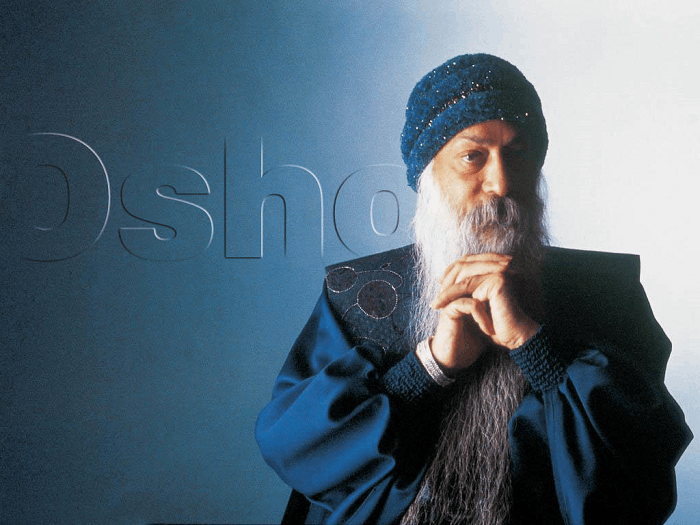
Mumbai: 1971–1974
At the start of 1970, Osho first demonstrated his Dynamic Meditation method in front of a large audience. Breathing extremely quickly while dancing and enjoying music were all part of dynamic meditation. At the end of June, he departed from Jabalpur for Mumbai. He began initiation ceremonies for his first set of followers, or neo-Sannyasins, on September 26, 1970. Although he urged his sannyasins to have a joyful life as opposed to an ascetic one, as a catalyst, "a sun stimulating the flower to blossom," he was not to be adored but rather was to be seen as a force for good.
By then, he had hired a secretary named Laxmi Thakarsi Kuruwa, who became his first student and replaced Ma Yoga Laxmi. She collected the money required for Osho to meet his travels. He relocated to Mumbai's Woodlands Apartments in December 1970, where he delivered speeches and welcomed guests, including his first Westerners. He no longer spoke at gatherings open to the public nor often traveled anymore. His name was changed to "Bhagwan Shree Rajneesh" in 1971.
He stated, "People who had previously come to collect information stopped coming, so I picked it for a particular reason, and it has worked wonderfully. They ceased the moment I referred to myself as Bhagwan. They couldn't handle someone calling themselves Bhagwan; it was excessive for their egos. It damages the ego. I've completely modified my attitude as of late. I began working in multiple dimensions and at various levels. I am now giving you reality rather than information. They were studying while I, an acharya, was teaching them. I am no longer your instructor, and you are no longer here as learners. It is my purpose to share reality. I'm here to wake you up. I'm not here to impart information; instead, I'll impart knowledge with a wholly distinct aspect."
Calling myself Bhagwan was only a sign that I had changed how I approached my profession. And that has been quite helpful. Instantaneously, all the incorrect people vanished, and new arrivals of entirely different quality began. It was successful. It worked out wonderfully; there were just those prepared to collapse with me. Everybody else got away. They paved the way for me. In any other case, it was quite challenging for the genuine aspirants to get closer to me because of the excessive crowding. Those gathered departed. The word "Bhagwan" had the same effect as an atomic bomb. It looked impressive. I'm glad I made that decision.
Bhagwan, "fortunate one," is a respectful title used in Indian culture to refer to a human being in whom the almighty is no longer concealed but expressed. Shree is a traditional form of identification, almost the same as the word "Sir." It may also denote a god or an avatar in Hinduism. Hindus who are intellectual and devout but do not worship a particular god are common in various regions of India and South Asia, where Bhagwan stands for the abstract notion of a global God.
Later, when he adopted a new name, he modified the definition of Bhagwan.
Pune Ashram: 1974–1981
Osho's health suffered because of Mumbai's humid atmosphere. He acquired diabetes, asthma, and various allergies. On the twenty-first anniversary of his encounter in Jabalpur, in 1974, he relocated to a home in Koregaon Park, Pune, which he had acquired with the support of Ma Yoga Mukta (Catherine Venizelos), a Greek shipping heiress.
From 1974 through 1981, Osho gave talks in the Pune ashram. The location, which currently serves as the center of the current OSHO International Meditation Resort, was originally two adjacent houses and 6 acres (2.4 ha) of land used to start an ashram.
It also permitted him to regularly record his speeches on audio and then on video and print them for global distribution. Western tourists' numbers rose significantly. The ashram eventually had a center for arts and crafts that created organic cosmetics, clothing, jewelry, and pottery and hosted theatre, music, and mime events.
Since 1975, when numerous therapists from the Human Potential Movement first arrived, the ashram has added an increasing number of therapy groups to go along with its meditation sessions. These groups have become a significant source of revenue for the ashram.
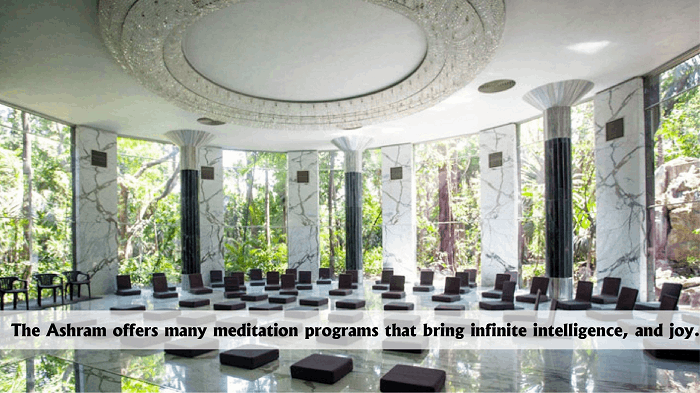
According to all reports, the Pune ashram had an intense emotional madhouse-carnival surrounding and was a beautiful and exciting place to be. Dynamic meditation kicked off the day at six o'clock in the morning. Osh began a 60- to 90-minute unplanned lecture at 8:00 a.m., commenting on religious works or responding to inquiries from guests and followers in the ashram's "Buddha Hall" auditorium.
Up until 1981, Hindi and English lecture series were alternately conducted. The spiritual energy of Osho's "buddha field" was credited with the intensity of numerous treatments and meditations throughout the day. Rajneesh spoke with specific disciples or tourists during nightly darshans and inducted disciples ("gave sannyasa"). Sannyasins came into view whenever they were leaving or coming back or they had something to discuss.
Visitors can consult Osho or make choices when deciding which therapies to take part in treatment. Early therapy groups in the ashram included the encounter group, an experimental setting that let individuals physically assault one another and engage in sexual activity. Press accounts of accidents that happened during Encounter group meetings started to differ.
After spending eight hours imprisoned in a room with other participants brandishing wooden weapons, Prince is said to have left the Pune ashram with a fractured arm. His Esalen colleague, Bernard Gunther, did better in Pune and produced a book called Dying for Enlightenment that included images and poetic explanations of the therapy sessions. The ashram announced in a press statement that the aggression in the therapy groups had "fulfilled its purpose within the larger context of the ashram as a growing spiritual community" in January 1979, when hostility in the groups finally stopped.
Sannyasins who had graduated through months of meditation and treatment were eligible to work in the ashram. The atmosphere was purposefully modeled after the community that the Russian mystic Gurdjieff founded in France in the 1930s. Hard, unpaid labor and hiring managers with abrasive personalities were key Gurdjieff elements used to create situations encouraging self-reflection and transcendence.
Along with debates regarding cures, claims of drug usage among sannyasins started to damage the ashram's reputation. Some Western sannyasins allegedly used prostitution and drug trafficking to pay for longer stays in India. Later, some claim that even though Osho was not personally engaged, he approved their ideas and activities when they discussed them with him during darshan.
Sannyasins from all across India began hunting for homes; among those discovered were two in northern India's hilly region and one in the Gujarati state of Kutch. The proposals were never carried out because of a stalemate caused by escalating hostilities. The government ceased giving visas to foreign tourists who listed the ashram as their primary destination, and land use clearance was also rejected. Desai's administration retroactively revoked the ashram's tax-exempt status, triggering a $5 million lawsuit.
Disputes with different Indian religious leaders worsened the situation; by 1980, the ashram had gained such popularity that Indira Gandhi, who Osho had a prior relationship with could not act on its behalf after coming back to power. Vilas Tupe, a young Hindu extremist, attempted to assassinate Osho in May 1980 while giving a speech. Tupe states that he committed the act of violence because he thought Osho was a CIA agent.
By 1981, 30,000 people visited Osho's ashram annually. The viewers for the daily conversation were mostly European and American by that time. Many observers noticed that Osho's speech style altered in the late 1970s, becoming less intellectually oriented and increasing the frequency of racial or dirty jokes meant to surprise or entertain his listeners.
On April 10, 1981, Osho commenced a three-and-a-half-year voluntary public solitude. Satsangs, which involve silent sitting while listening to sound and recitation from spiritual texts like the Isha Upanishad or The Prophet by Khalil Gibran, took their place. The same period saw Ma Yoga Laxmi's replacement as Osho's secretary by Ma Anand Sheela (Sheela Silverman).
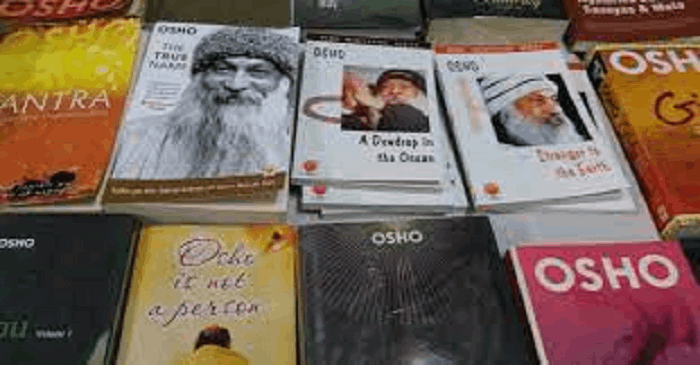
Travels and Return to Pune: 1985–1990
Osho returned to India after leaving the US, arriving in Delhi on November 17, 1985. He was greeted with hero worship by his Indian devotees. After that, he resided in Manali, Himachal Pradesh, for six weeks. Osho believed it might further expand the island by including houseboats and floating gardens in a Japanese manner. Sannyasins traveled to the island, but after learning that the region was sensitive to storms, they decided it was inappropriate. He continued to Kathmandu, Nepal, and then, a few weeks later, to Crete when non-Indians in his group had their visas canceled.
After being detained for a short period by the Greek National Intelligence Service (KYP), he attempted to travel to Geneva, Stockholm, and London but was denied entry to each location. Next, Canada denied his request to land, so his flight returned to Shannon Airport in Ireland for fuel. He was permitted to stay at a hotel in Limerick for two weeks as long as he didn't leave the hotel or deliver any speeches.
The group departed after stopping in Madrid, where the Guardia Civil rang the airplane. He had been awarded an Uruguayan identification card, one year of temporary residency, and the potential for permanent residency. He was permitted to stay in Dakar for one night before traveling to Recife and Montevideo. Jamaica also granted a two-week visa, but authorities ordered them to depart within 12 hours when the party arrived in Kingston. On July 30, 1986, Rajneesh traveled back to Bombay, India, after refueling at Gander and Madrid.
Osho moved to his ashram in Pune in January 1987 and continued his daily evening speeches there, aside from times when his rare illness prevented him from doing so. After a break of more than ten years, Osho developed fresh "meditation therapy" techniques like the "Mystic Rose" and resumed leading meditations in his lectures. His followers in the West largely preferred to live independently and did not establish any sizable communes. Since 1985, the red and orange clothing and the mala have been widely disregarded.
Osho stated in November 1987 that he thought the US government had poisoned him while he was imprisoned because of his failing health (nausea, exhaustion, pain in his limbs, and a loss of infection resistance). Since his ailments were centered on the right side of his body, his physicians and former attorney Philip Toelkes (Swami Prem Niren) hypothesized that radiation and thallium were in an intentionally irradiated mattress. Still, they could not provide any concrete proof. US attorney Charles H. Hunter called it "total fabrication." Others put it down to stress, diabetes with complications, or HIV contact.
From the beginning of 1988, Osho's talks were entirely on Zen. Osho criticized capitalism and discussed the potential for sannyasa in Russia in his longest talks titled "Communism and Zen Fire, Zen Wind" in early 1989. He claimed that communism and mysticism might both develop into anarchism in these lectures. "I've always had a highly analytical approach, both internally and externally."
The foundation may be communism. Then spirituality must contribute to its development and fill in the gaps. He announced his desire to stop using the name "Bhagwan Shree Rajneesh" in late December, and in February 1989, he adopted the name "Osho Rajneesh," which he later abbreviated to "Osho." In September, he dropped the word "Bhagwan" from his name.
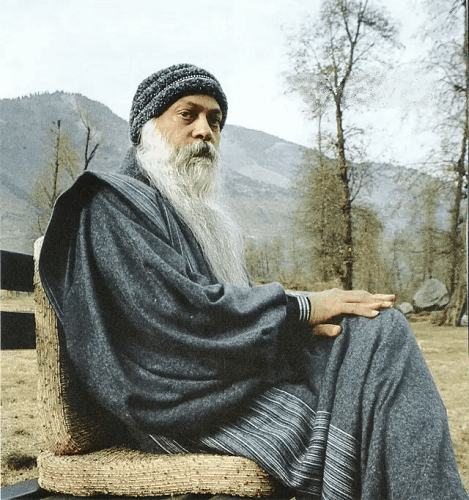
Additionally, he asked that all copyrights that had previously been labeled with "Rajneesh" be changed to "OSHO." His condition deteriorated and became worse. In April 1989, he gave his final speech in front of the public, and from that point, he merely sat quietly with his disciples. Osho claimed shortly before his passing that one or more attendees at nightly gatherings (now known as the White Robe Brotherhood) were exposing him to some black sorcery. There was an investigation into young criminals, but none were discovered.
Death
On January 19, 1990, Osho passed away at the ashram in Pune, India. He died at the age of 58. Osho died due to a heart attack. Still, according to a statement issued by his community, he passed away because "life in the body had become a hell" due to suspected poisoning in American prisons. His remains were spread in his freshly constructed bedroom in Lao Tzu House, Pune. The memorial says, "Not Born, Not Died only made one trip to Earth, from December 11, 1931, to January 19, 1990."
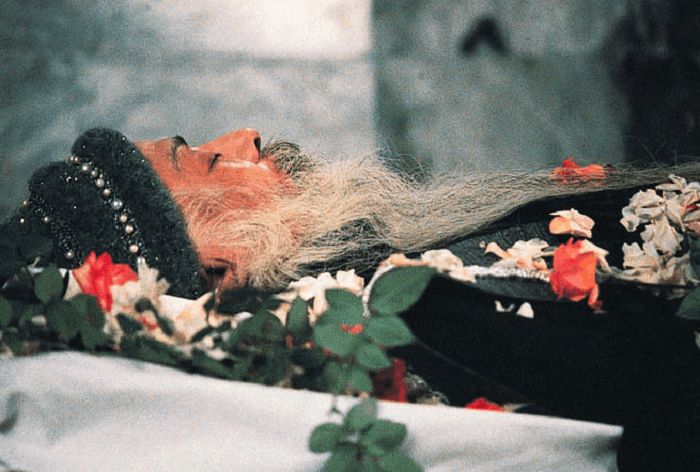
A January 2019 article in The Quint states that Osho's death is still a secret. It presents various theories, including "Was Osho killed for cash?" Is he serious about it? "Are Indian treasures being looted by foreigners?"
Teachings
Osho did not give his lessons in an academic atmosphere; rather, they were spread throughout his lectures with humor. Since Osho loved paradox and conflict, summarizing his work was difficult because his attention was dynamic and shifted over time.
His early speeches, in general, were renowned for their comedy and unwillingness to take things seriously. He thrived on acting in ways that appeared opposed to conventional notions of educated people. However erratic and challenging to accept, this behavior was justified as a "method for change" meant to take individuals "beyond the conscious."
According to the sociologist Lewis F. Carter, his theories are based on Hindu Advaita, which holds that life experiences of disconnectedness, dualism, and temporality are similar to a cosmic dance or play in which everything is holy, has excellent value and serves as a means in and of itself. Even though Jiddu Krishnamurti did not support Osho, there are unmistakable parallels between his beliefs and those of his contemporaries.
Osho also incorporated different Western ideas. When he hears of this guy's belief in the unity of the opposition, Heraclitus comes to mind, and George Gurdjieff and Sigmund Freud come to mind when they hear of this guy's portrayal of man as a machine, doomed to the powerless acting out of the unconscious, neurotic patterns. Friedrich Nietzsche's Beyond Good and Evil comes to mind when considering his view of the "new man" transcending social norms. D. H. Lawrence comes to mind while discussing his support for sexual emancipation.
Ego and The Mind
Osho believes that every person has the potential to become enlightened, is worthy of unconditional love, and can act rather than respond to life. However, the ego typically stands in the way of this potential by associating with societal conditioning, producing erroneous needs and disputes, and an illusory sense of individuality that is nothing more than a dream barrier. Otherwise, shifting from the periphery to the center might allow man's inherent nature to blossom.
Osho believed that the mind functions primarily as a tool for survival, copying behavioral techniques that have been proven effective. "The mind has no inner potential for pleasure." "It only wonders about joy," he stated, adding that the mind's appeal to the past robs people of the opportunity to live honestly in the present.
As a result, they bury real feelings of joy and close themselves off from them when they embrace the present. People end up poisoning themselves with various neuroses, jealousy, and anxieties. He stated that psychological repression, which religious leaders frequently promote, causes repressed emotions to reappear in other forms and that sexual repression leads to cultures being obsessed with sex.
The trust required being grasped via meditation rather than just intellectual understanding, which the mind could only accept as additional knowledge.
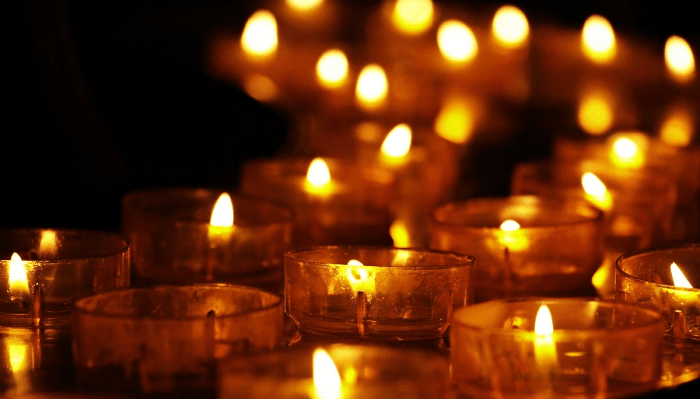
Meditation
Osho said that meditation should be viewed as a constant sense of consciousness that awakens people from the automatic reactions programmed into them due to their expectations and assumptions.
He proposed over a hundred different meditation techniques. His "active meditation" methods are characterized by strong exertion that progresses to quiet.
The most well-known of them is still Dynamic meditation, which has been compared to a miniaturized version of his worldview. It consists of five steps, four of which include musical accompaniment, and is executed with the eyes closed or covered.
The first step of the meditation is 10 minutes of fast nasal breathing. "Let whatever is occurring happen..." "Laugh, shout, scream, leap, shake—whatever you desire to do, do it!" is the advice during the second ten minutes of the performance. The next step is to jump up and down for 10 minutes while raising your arms and saying "Hoo!" each time you land on your feet. The fourth stage, known as "silence," is when the practitioner abruptly and fully comes to a complete halt, keeping still for a full fifteen minutes while observing all that is occurring. The last meditation stage is followed by fifteen minutes of dance and joy.
Other active meditation methods created by Osho include the less energetic Kundalini "shaking" meditation and the Nadabrahma "humming" meditation, both of which include some form of physical exercise. Additionally, he used to conduct nonsensical sessions when students were instructed to utter only meaningless noises to cleanse their minds of clutter and unwind.
His subsequent "meditative treatments" included sessions over several days; OSHO Mystic Rose included three hours of laughter every day for one week, three hours of sobbing every day for the next two weeks, and three hours of quiet meditation the third week. These "witnessing" techniques allow one to "leap into consciousness." Osho said cathartic techniques were essential since it was challenging for modern people to sit and enter meditation. People may easily utilize additional techniques after these approaches have given them a taste of meditation.
Sannyas
He was a crucial component: "A master communicates his life with you, not his ideology." "He never does any harm to the pupil." Another one of these devices was the initiation he proposed: "It is the highest type of connection that is possible: a transfer without words." If your being can interact with mine, it becomes a communion.
We combine them into one. Only by becoming a devotee is this achievable. Osho ultimately destroyed his power, claiming that his teaching was a "game" or joke as an overtly "self-parodying" guru. He noted that every situation might serve as a meditation session.
Reception
One of the most disputed spiritual figures to have arisen from India in the 20th century is usually regarded as Osho. His philosophy of freedom from institutionalized oppression in all areas—sexual, emotional, spiritual, and otherwise—and his joy in offending people ensured his existence was overshadowed by controversy. In India, Osho gained notoriety as the "sex guru," while in the US, he was referred to as the "Rolls-Royce Guru." He freely proclaimed his dislike for politicians, attacked conventional nationalist ideas, and made fun of religious leaders, all of whom found his arrogance unacceptable.
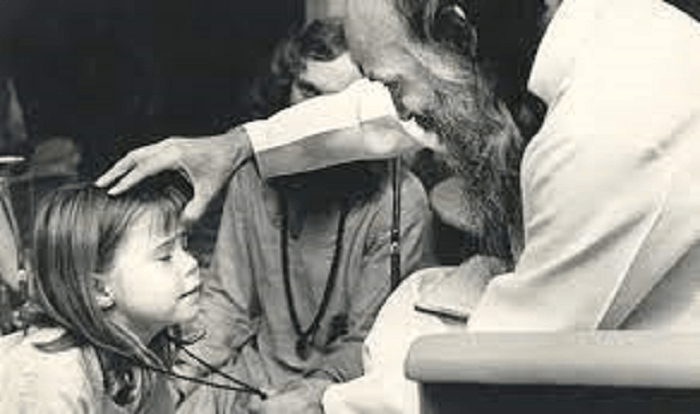
His ideas on sex, marriage, families, and relationships ran counter to conventional wisdom, which offended people worldwide and met with a lot of resistance. Many people viewed his program as a cult. Osho was perceived to live "in ostentation and insulting affluence," but his devotees, the majority of whom had severed links with non-communist friends and family and contributed all or the majority of their goods to the commune, might only be at a "subsistence level."
Legacy
Even though Osho's beliefs were not widely accepted in his nation when he was alive, popular opinion in India has changed following his passing. A
ccording to journalist Tanweer Alam's article in The Indian Express, "The late Osho was the great translator of social illusions that undermined human happiness." Osho's ideas are "more applicable in the contemporary context than ever before," Indian musician Wasifuddin Dagar declared during a ceremony in 2006 honoring his 75th birthday. As of January 2008, there were 60 Osho centers in Nepal, home to nearly 45,000 accepted disciples.
The National Parliament Library of India in New Delhi now houses all of Osho's writings. Osho is recognized for authoring over 650 books that share his opinions on many elements of human existence. Parveen Babi, among many other Bollywood stars, was well-known for following Osho's method of thinking. More than 200 publishing firms offer his works in more than 60 languages, and they have made it onto best-seller lists in Italy and South Korea.
Osho is well-known and widely published in the field of meditation and writing social and widely published political commentary. His supporters have reinterpreted his efforts, changing key ideas in his ideology to make them seem less challenging to outsiders.
Western European and North American societies have adapted to them, becoming increasingly receptive to spiritual practices like yoga and meditation. The Osho International Foundation (OIF),with stated (2000) revenues in the US ranging from $15 to $45 million, offers stress treatment workshops to businesses like IBM and BMW.
A satirical Facebook page in Italy called Le più bella frasi di Osho that reuses images of Osho with amusing statements about national politics was started in 2016 and rapidly topped one million followers. The page immediately became a cultural phenomenon in the nation, with posts republished by major newspapers and broadcast on television.
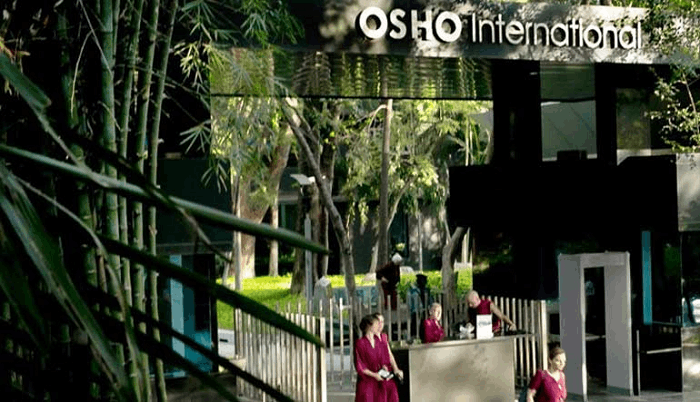
The OSHO International Meditation Resort is now situated in Osho's former ashram in Pune. It calls itself the Esalen of the East. It markets itself as a spiritual sanctuary, a "holy space" for self-discovery and the fusion of body and mind needed in a stunning resort setting. It offers a wide range of spiritual practices from many different traditions.
Politicians and media figures have reportedly been among the notable guests. The Philosophy Department of the Mankunwarbai College for Women in Jabalpur launched a national conference on Osho's ideas in 2011. The University Grants Commission's Bhopal office funded the seminar, centered on Osho's "Zorba the Buddha" doctrine, and attempted to bridge the gap between spirituality and a materialist, scientific viewpoint. In 2013, the property mandated that all visitors undergo an initial HIV/AIDS screening at its Welcome Center.
"Ten Commandments" by Osho
A reporter reportedly requested his "Ten Commandments" when he was still known as Acharya Rajneesh. Osho responded by stating that it was a challenging situation because he was against all forms of the commandment, but "just for fun," he provided the following:
1. Only follow someone else's instructions if you also feel them.
2. There is no other entity besides life itself as God.
3. The truth is inside you; stop looking for it outside of yourself.
4. Prayer is love.
5. The way to the truth is to disappear and become nothing. The method, aim, and accomplishment is nothingness themselves.
6. Life is here and now.
7. Be awake at all times.
8. Instead of swimming, float.
9. You must die every moment to begin again.
10. Do not search. That which is, is. Stop and see.